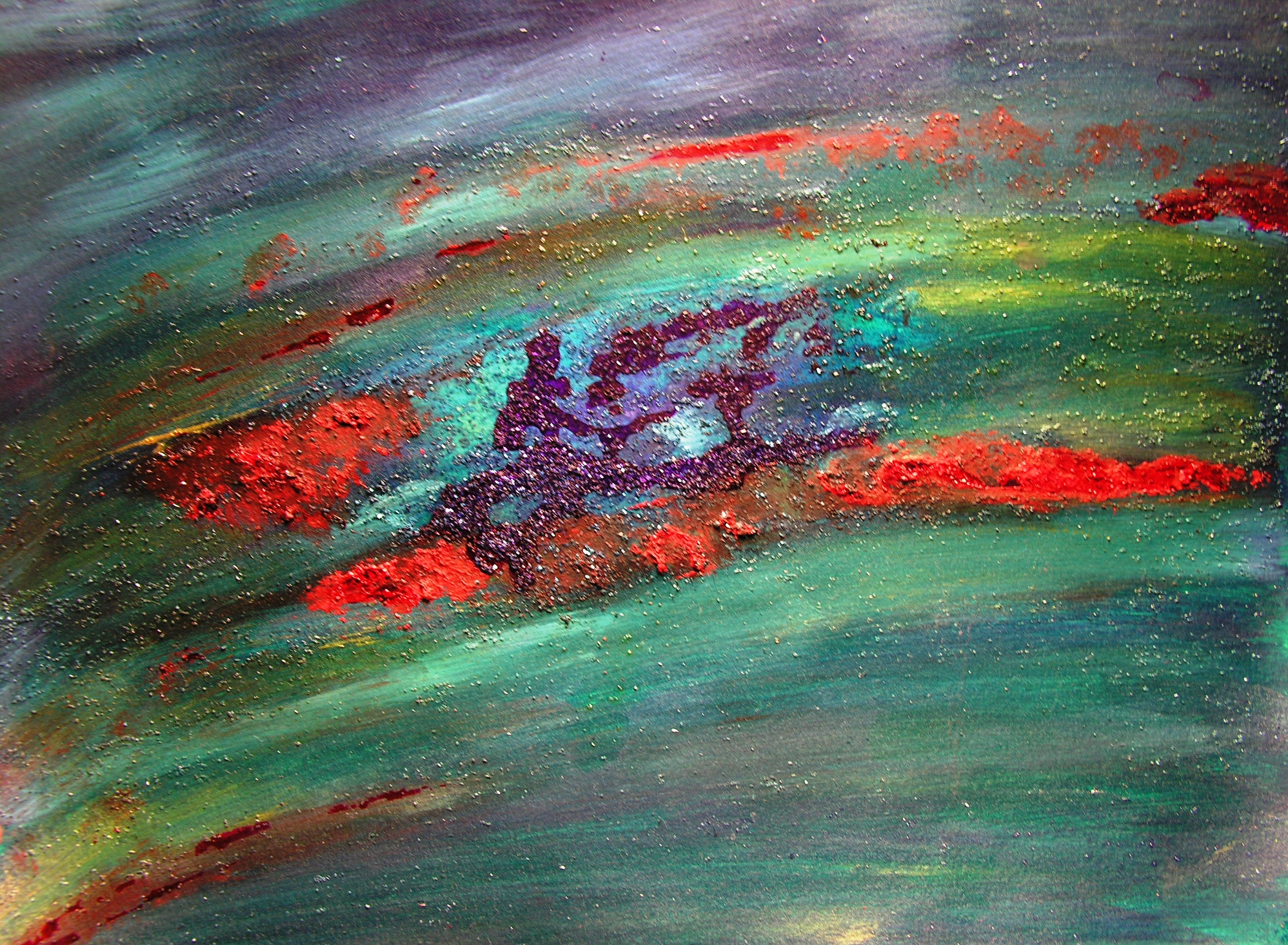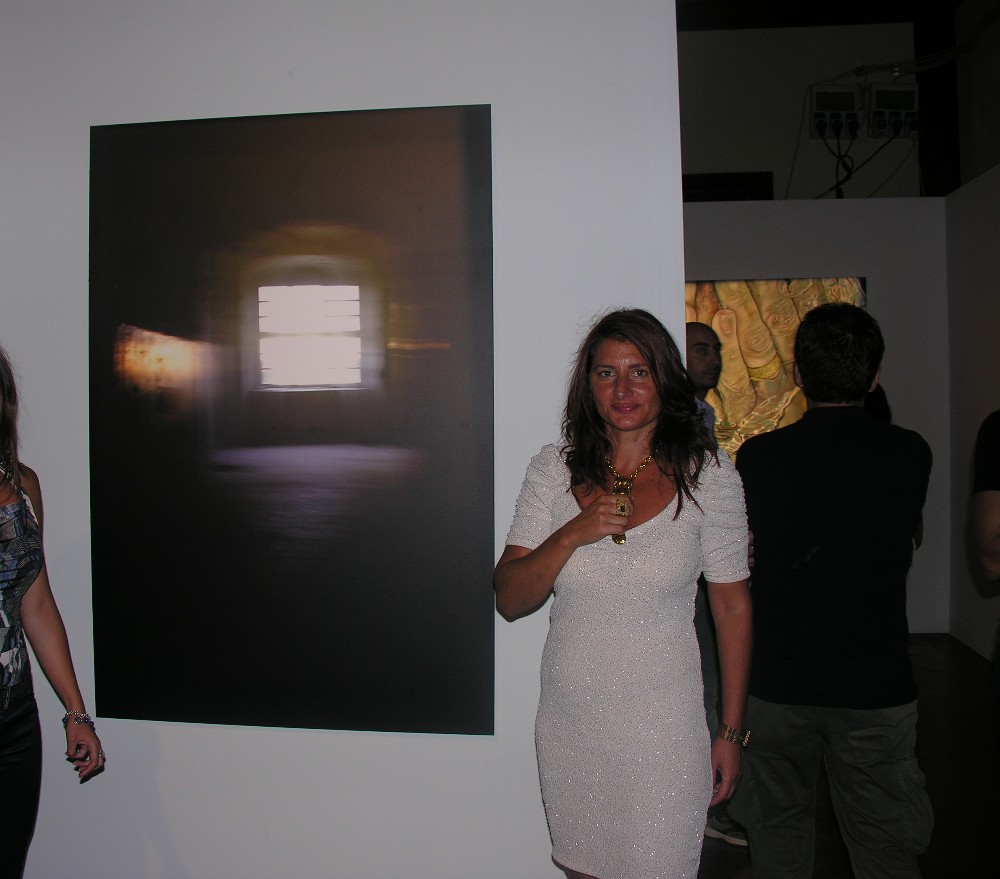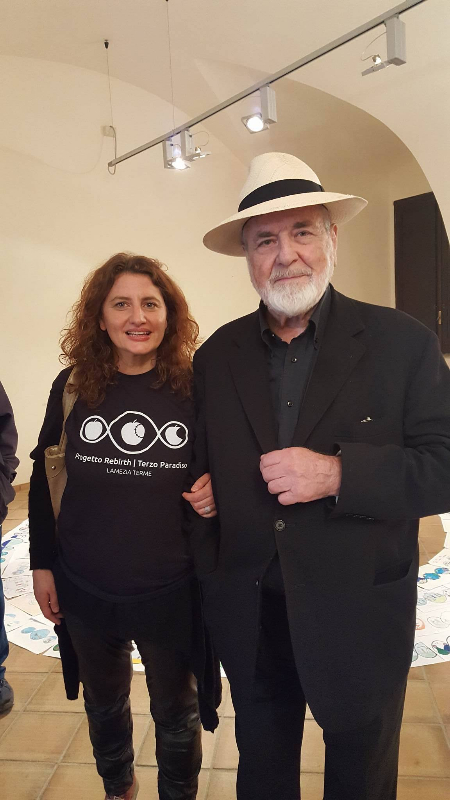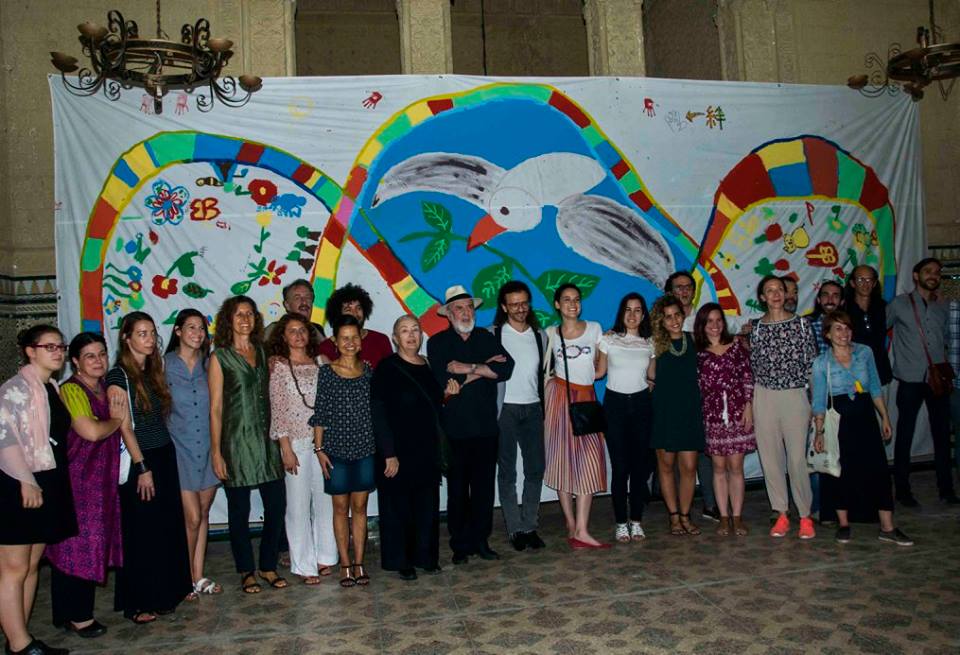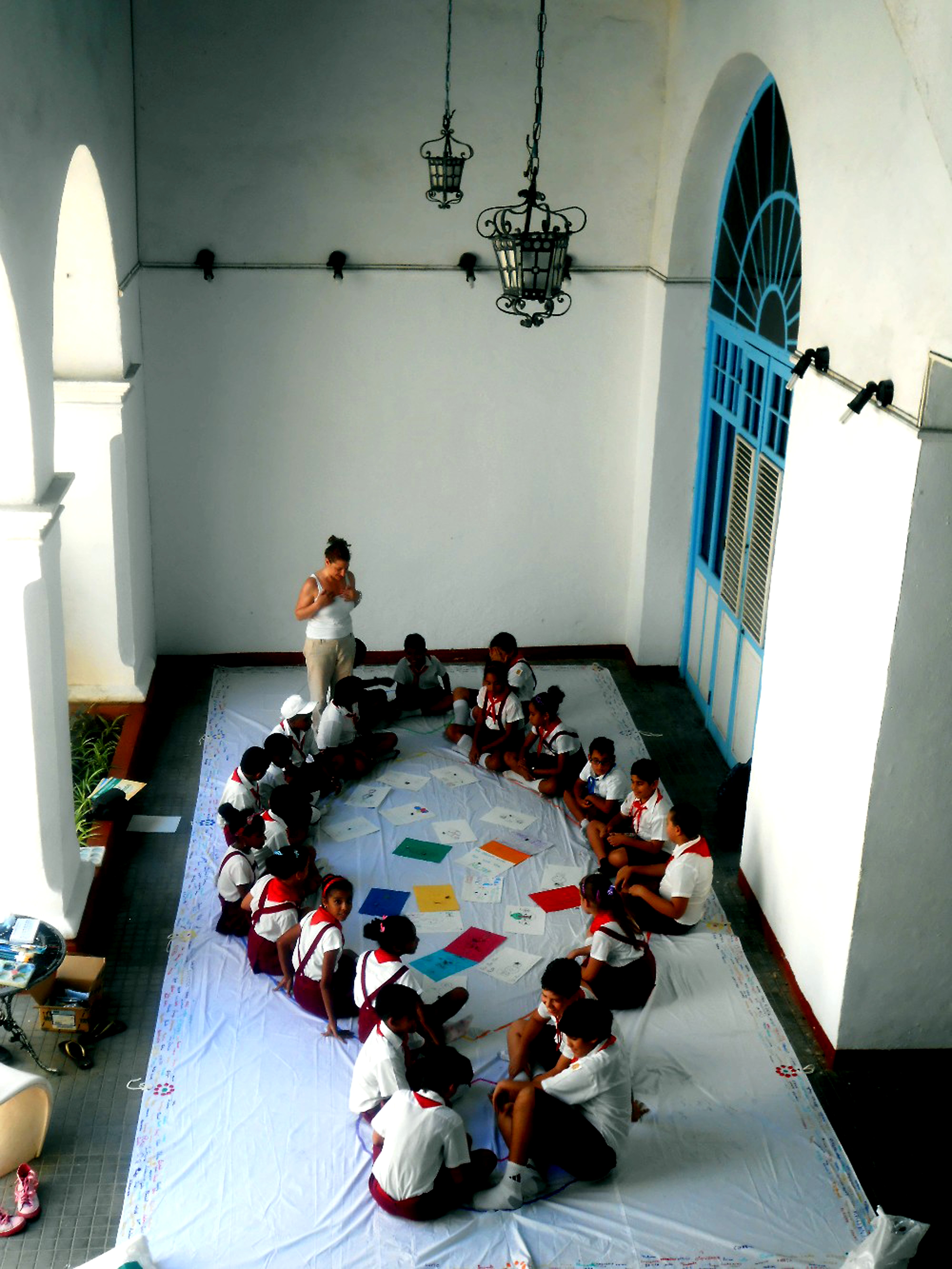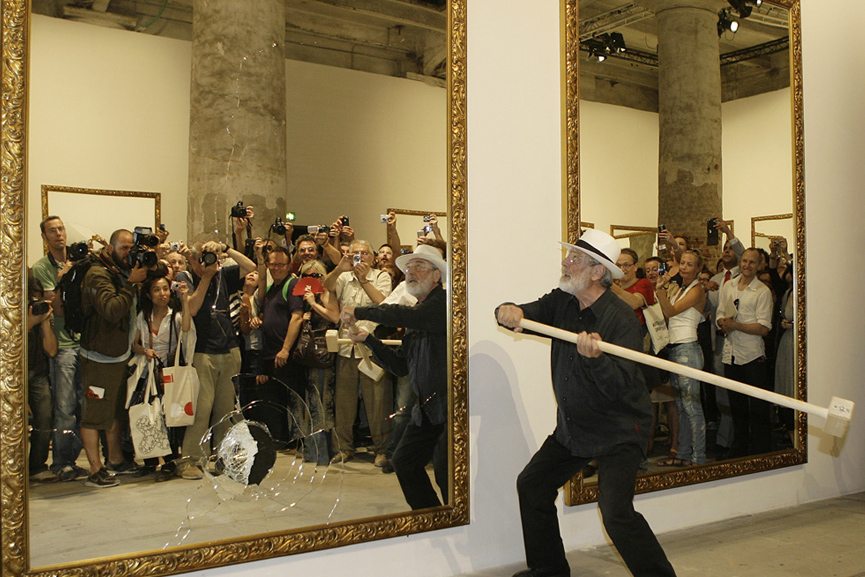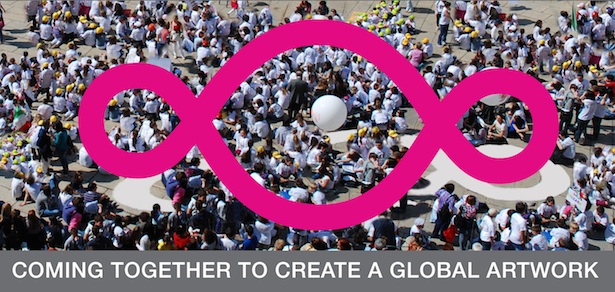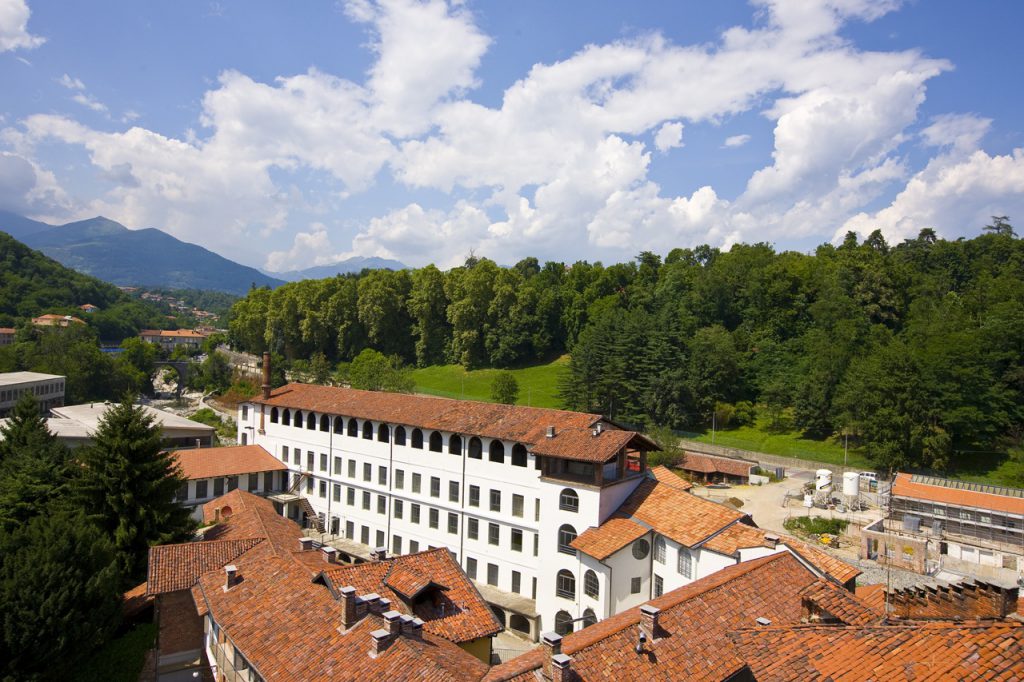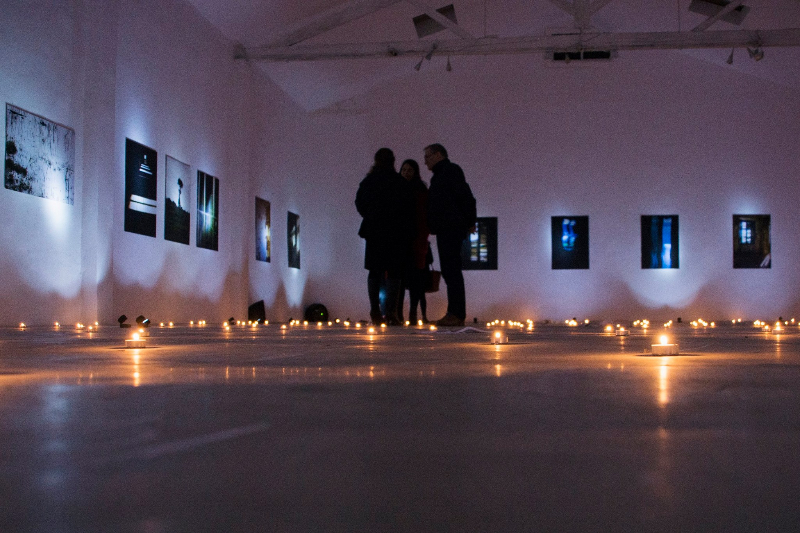AFP Interview: Savina Tarsitano, Visual Artist and Ambassador of the Third Paradise Project of Michelangelo Pistoletto and Cittadellarte.
Savina Tarsitano is a visual artist born in Calabria, Italy. She enjoys traveling around the world, but her main interest is experiencing new cultures and countries while sharing her ideas and art across the world. Thanks to her artistic research, she obtained several fellowships and artist residencies. Her work has been selected for the Biennal of Venice, and exhibited in many countries. Savina’s work has also been published in several books and catalogues. She is a member of the European Cultural Parliament and Ambassador for the Rebirth project of Michelangelo Pistoletto and Cittadellarte.
Savina, nice to meet you and welcome to Art for Progress. Please, tell us about your art.
My art is focused on the idea of the landing, after different sojourns in theme- places like islands, abbeys, castles, military fortresses and so on. My works are made with different languages that represent embodied visions from the relationship with space, which in my representation is not only a real, but also an imaginary territory. During the period I, I developed three main projects: The Icons of the Chaos, Emotional Architecture and Creativity in Motion for Social Integration through Art and The Island You Want. Through The Island You Want, I was investigating the character and the specific difference of island spaces and landscapes through which I developed an artistic theme. This hermetic operation touches upon both nature, history and culture.
My stays on the island of Suomenlinna in Finland, on the island of Frioul in France, in the town of Bogliasco in Liguria (Italy), on the Island of Martinique, on the island of Greenland, in the town of Ambronay in France and in the town of Coswig in Germany, In Japan, Bali, Cuba were and are times of empirical investigation and creative development. I arrived armed with a study of chaos theory. This gave me a new way to look at nature: the idea that a point of view informed by scientific theory marked an unusual space for artistic images. My work records an irreversible vision of the area between mathematics, landscape and historical monuments.
After my stay in Greenland, an international tour exhibition was organized in cooperation with the Danish Embassy in Rome, Italian Culture Institute in Copenaghen, Galleria Gallerati Rome, Danish Culture Institute in Brussels, Art Centre in Nuuk and the Upernavik Museum in Greenland.
I also enjoy cooperating in interdisciplinary art projects. Among my most relevant cooperations: The project in cooperation with the American composer Morris Rosenzweig, to create a new sound photography installations. He composed music inspired by my photography- a dialogue between music and pictures to celebrate the places where I have been hosted. The cooperation with the Romanian poet Dinu Flamand,-a dialogue between photography and poetry. Savina’s work has been selected for the Dinu Flamand poetry anthology published in several languages. And the cooperation with the Catalan poet and dramaturgy Albert Mestres a dialogue between theatre and visual arts.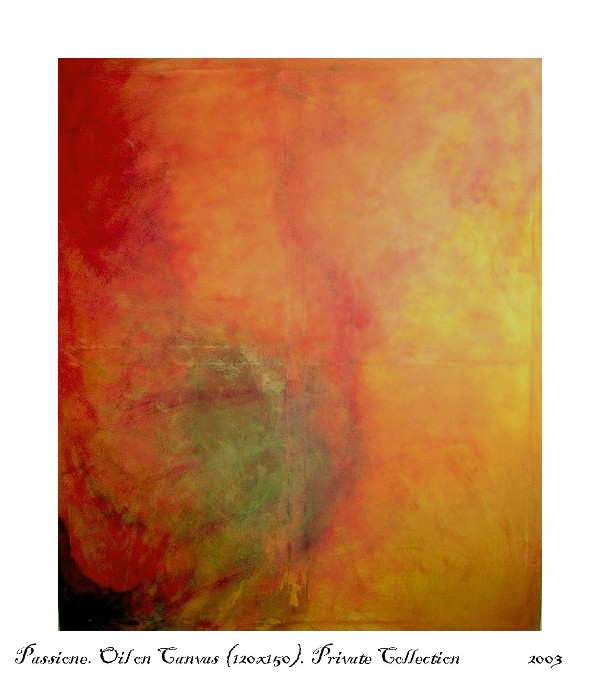
During the years from 2006 to 2010, I was doing an artistic residency in Martinique, in the Caribbean islands at the Domaine de Fonds Saint-Jacques Art Center, supported by the Odyssey program run by ACCR of Paris. During this period I developed my project “Creativity in Motion.” It was a social integration process through art with the local community, children and young people. The aim of the project was in particular to help young people get integrated into the culture and art activities.
Thanks to the participation of the International Project for Children and Peace “Kids-Guernica“ the young people had the opportunity to create a big canvas inspired by Picasso’s work and to participate in several festivals and workshops related to social change.
In 2011, with the help of the cooperation of the local associations, families and the Caribbean Art Campus, we obtained a cultural fellowship for a group of 12 young people. They were allowed to travel with me throughout Europe.
We had the opportunity to travel to Turin, Venice, Paris, Milan, Brussels and Biella. I decided to go to visit Biella with them, because I consider Michelangelo Pistoletto’s Project one of the best example of the social change through art in Europe.
I was so excited about this trip because it was my first time at Cittadellarte. After our visit, they decided to invite us to participate in the first “Rebirth” event, celebrated at the Louvre Museum in Paris. After that great event, I was nominated Ambassador of the Rebirth Project.
It was great! I couldn’t believe that I become an Ambassador of the Third Paradise a project of Michelangelo Pistoletto and Cittadellarte! It is very difficult to explain how happy and honored I felt in that moment.
How does it feel to work with a historic person such as Michelangelo Pistoletto?
As I described before, I feel very honored to have the opportunity to know this great artist. Michelangelo Pistoletto is a visionary person with great humanity. He throws himself into his aim to contribute in the creation of a better society, with responsibility and respect.
To work with him and to listen to him is a very special feeling. I feel myself happy and I feel I take part of a great project. For me as an artist, it is a real privilege to know his thoughts, his work and to share with him personal opinions and ideas. During these years I had the opportunity to improve myself, to become more humble, and to understand what means to be a great artist and person.
As you told us, you are one of the worldwide Ambassadors of the Third Paradise Project of Michelangelo Pistoletto and Cittadellarte.
Savina, could you please explain your role in this project?
As an ambassador, my responsibility is to develop projects with local communities and children around the world with respect and responsibility. According to Michelangelo Pistoletto’s philosophy – to create a better world respecting human values.
I worked for example in my city in Italy, Lamezia Terme with 1500 students (average age from 3 to 14 years old). We had a big final performance with many people in the city. To share art and creativity in the city and with people is very important to show them the vision and the power art has to bring people together. I am also teaching in Brussels in a language school- Tutti Frutti, where I teach the students art history and Pistoletto’s philosophy. Moreover as I am a representative also of the International Project Kids-Guernica, I try to create a bridge and connections among different countries and small villages in the world. The project is based on: peace, social change, social integration, sustainability and so on.
Where is your embassy located and in which cities do you work?
Nowadays I work in Calabria, Lamezia Terme, Brussels and also in Asia connected with the International Project for Children and Peace Kids-Guernica which is inspired by the work of Pablo Picasso entitled “Guernica.” The main objective is the creation of a big canvas which would be the same size as “Guernica (7,50×3,50).”
Since 2007 I have been cooperating with Kids-Guernica and in 2014 a cooperation among the Third Paradise and Kids-Guernica was born for creating new canvases around the world. I am one of the curators of that beautiful project.
I collaborate with Japan, Bali, Cambodia and USA. I am also cooperating with Cuba in connection with the Rebirth Forum, where I cooperate with local communities and children.
We are fascinated about one of the pillars of Pistoletto’s art: Performance. Please describe it!
According to him: “The performance’s main focus is not about the individual conception of it by the artist, but about the fusion and involvement between the people in the artistic world and those you may encounter on the street, who are part of the common and daily life.” And more: “Usually, art draws people into museums and galleries. Me, I like to bring art into communities. We can all be creative, not only as individuals but also as a common force, and we should know that together we can produce something new, something that doesn’t exist. Societies should learn and understand that through art they can transform the way to be together.” — M. Pistoletto
First of all, I think that it will be useful to say something about his work and his thought to better understand his art, performance and his vision for the project Third Paradise. Actually all of the performances around the world which are inspired by the Third Paradise follows his idea on the power of art to change the world.
Michelangelo Pistoletto was born in Biella in 1933. He began to exhibit his work in 1955 and in 1960 he had his first solo show at Galleria Galatea in Turin. In the two-year period 1961-1962 made the first Mirror Paintings, which directly include the viewer and real time in the work and open up perspective, reversing the Renaissance perspective that had been closed by the twentieth-century avant-garde. These works quickly brought Pistoletto international acclaim, leading, in the sixties, to one-man shows in important galleries and museums in Europe and the United States. The Mirror Paintings are the foundation of his subsequent artistic output and theoretical thought.
In 1965 and 1966 he produced a set of works entitled Minus Objects, considered fundamental to the birth of Arte Povera, an art movement of which Pistoletto was an animating force and a protagonist.
The Newspaper Sphere (Sfere di Giornali) was created in ’66 and rolled onto the streets of Turin, Italy in ’67, which became the historical performance piece Walking Sculpture (Scultura da Passeggio). In 1967 he began to work outside traditional exhibition spaces, with the first instances of that “creative collaboration” he developed over the following decades by bringing together artists from different disciplines and diverse sectors of society.
In 1978, in a show in Turin, Pistoletto defined two main directions his future artwork would take: Division and Multiplication of the Mirror andArt Takes On Religion. During the nineties, with Project Art and with the creation in Biella of Cittadellarte – Fondazione Pistoletto and the University of Ideas, he brought art into active relation with diverse spheres of society with the aim of inspiring and producing responsible social change. In 2003 he won the Venice Biennale’s Golden Lion for Lifelong Achievement. In 2004 the University of Turin awarded him a laurea honoris causa in Political Science. On that occasion the artist announced what has become the most recent phase of his work, Third Paradise. In 2007, in Jerusalem, he received the Wolf Foundation Prize in the Arts, “for his constantly inventive career as an artist, educator and activist whose restless intelligence has created prescient forms of art that contribute to fresh understanding of the world.”
In 2010 he wrote the essay The Third Paradise, published in Italian, English, French and German. In 2011 he was the artistic director of Evento 2011 – L’art pour une ré-évolution urbaine in Bordeaux. In 2012 he started promoting the Rebirth-day, first worldwide day of rebirth, celebrated every year on 21st December with initiatives taking place all around the world.
In 2013 the Louvre in Paris hosted his personal exhibition Michelangelo Pistoletto, année un – le paradis sur terre. In this same year he received the Praemium Imperiale for painting, in Tokyo.
In 2014 the symbol of the Third Paradise was installed in the hall of the headquarters of the Council of the European Union in Bruxelles for the period of the Italian Presidency of the European Council. In May 2015 he received a degree honoris causa from the Universidad de las Artes of Havana in Cuba. In the same year he realizes a work of big dimensions, called Rebirth, situated in the park of the Palais des Nations in Geneva, headquarters of the UN.
What does Third Paradise mean?
Third Paradise is the fusion between the first and second paradise. The first is the paradise in which humans were fully integrated into nature. The second is the artificial paradise, developed by human intelligence to globalizing proportions through science and technology. This paradise is made of artificial needs, artificial products, artificial comforts, artificial pleasures, and every other form of artifice. Human kind has created a truly artificial world which has triggered, in an exponential manner and in parallel with beneficial effects, irreversible processes of decline and consumption of the natural world. The Third Paradise is the third phase of humanity, realized as a balanced connection between artifice and nature. The Third Paradise is the passage to a new level of planetary civilization, essential to ensure the survival of the human race. To this purpose we first of all need to re-form the principles and the ethical behaviors guiding our common life. The Third Paradise is the great myth that leads everyone to take personal responsibility in the global vision. The term “paradise” comes from the ancient Persian and means “protected garden.” We are the gardeners who must protect this planet and heal the human society inhabiting it.
The symbol of the Third Paradise, a reconfiguration of the mathematical infinity sign, is made of three consecutive circles. The two external circles represent all the diversities and anatomies, among which nature and artifice. The central one is given by the com-penetration of the opposite circles and represents the generative womb of a new humanity.
Michelangelo Pistoletto, 2003 www.terzoparadiso.org
Please tell us about Cittadellarte and Pistoletto Foundation, a beautiful historic space located in Italy.
Cittadellarte’s aim is to inspire and produce a responsible change in society through ideas and creative projects. Cittadellarte-Fondazione Pistoletto was instituted in 1998 as a concrete action of the Progetto Arte Manifesto, where the artist Michelangelo Pistoletto proposed a new role for the artist: that of placing art in direct interaction with all the areas of human activity which form society.
The name Cittadellarte incorporates two meanings: that of the citadel or rather an area where art is protected and well defended, and that of the city, which corresponds to the idea of openness and inter relational complexities with the world. Cittadellarte is a great laboratory, a generator of creative energy that generates unedited processes of development in diverse fields of culture, production, economics and politics. The activities of Cittadellarte pursue a basic objective: to operationally take artistic interventions into every sector of civil society to contribute responsibly and profitably to address the profound changes of our age.
Cittadellarte is structured organically according to a cellular system that configures itself in a main nucleus that subdivides into different nuclei. These take the name of Uffizi. Each office carries out its own activity addressing specific areas of the social system. The goals of the Uffizi are: to produce a responsible transformation of global society, starting from their smaller local dimensions. The Uffizi are divided into the following categories Art, Education, Ecology, Economy, Politics, Spirituality, Production, Work, Communication, Architecture, Fashion and Nourishment. The logo clearly represents the cellular structure of Cittadellarte and reflects this in the way it organically functions. Cittadellarte is situated in Biella along the banks of the Cervo River in the restored premises of industrial archaeology. The symbolic denomination Cittadellarte is united with the legal name Fondazione Pistoletto ONLUS that has an agreement with the Piedmont Region and the Municipality of Biella.
Savina, are you involved in other projects you want to share with us?
Yes, I would like to share with you the main projects that I am developing and with I am also trying to create bridges of cooperation among people and cultures.
In 2005 I developed an artistic project entitled “Creativity in Motion” to promote social integration and responsible transformation through art. The main objective is to engage and connect community members, children, undeveloped area to work together in promoting activism and positive social change through art, performance and action. Art is a strong tool and help us to analyze how children use imagines for exploring and communicating their experiences and identities, and creating a sense of belonging while living at the margins of the wider community. I want to emphasize children’s creativity to express their worlds to a broader community through art collaborations and the importance of their concerted efforts to build relationships with the wider community. Art can promote social justice, foster democracy and participatory values, as the core of a responsible transformation strategy and as a source of memory and identity. The role played by art and artists should be not only to document social change, but to inform, create awareness, denounce injustices and promote change. Therefore, I decided to be involved in international projects related to social and responsible changes of the community in an attempt to create links with the small community’s around the world.
My aim is to analyze and distinguish the importance of art and culture to build a better world and role in the processes of social transformation, and what kind of relation exists between community and art.
My question: if the community accepts the responsibility for the impact of their activities on the environment, on consumers, employees, communities, and all other members of the public sphere, art could then help people to build new relations which would respect ethics, values and involve the community to foster social and economic development?
It makes sense to ask ourselves how to understand the relation of art to the social world and how to understand the social responsibility of the artist and his or her relationship within our society.
Moreover, I am also one of the co-founders of the Center for Art & Culture Espronceda in Barcelona. As I am an artist, I wanted also to contribute with my experience in the field of art. In particularly to help young artists in developing their careers. Espronceda – founded, 2013 in Barcelona – is an innovative and contemporary art center, exhibition and work space.
Espronceda provides a platform and multi-disciplinary environment for artists, curators, and everybody else who believes in the importance of art, culture and education for more creativity and a better world. Espronceda fosters established and aspiring international artists to develop their work and creativity, and to spread their inspiration beyond their physical stay in the space. Espronceda – Center for Art & Culture is a house for art, culture, creativity and education. With a permanent program of artistic residency, Espronceda provides a platform for the dialogue of contemporary art between the local and international environment. In addition, the art center also develops an exhibition program, and a diversified proposal of educational activities and cultural promotion.
And I am also member of the European Culture Parliament. I have been nominated in 2008 thanks to my activities and involvement in the art field, and also in connection with the local community. As a member, I underline the importance of the role of the artist in today’s society and our responsibility to build a new world. The “European Cultural Parliament” is a forum for European personalities in the fields of arts, culture and letters for dialogue, discussions and debate about crucial and burning issues of importance for European co-operation, European democracy and European culture.
The belief of the “European Cultural Parliament” is that the European idea is based on a balance between respect for the diversity of cultures in Europe and cross-cultural tolerance and understanding. The purpose of the “European Cultural Parliament” is to strengthen the role of cultural and artistic ideas in the debate on the future of Europe. The parliament will stand for common values, cultural identity and diversity as well as tolerance and will promote bridge building with other cultures.
Wow, Savina, there are no words to describe the great job you are doing in this world. It is a pleasure to have this discussion with Art for Progress, and we hope to collaborate with you soon in one of your great projects and adventures. Thank you so much for your time and for this nice interview.
You are welcome Nerea. Thanks to Art for Progress for the opportunity to talk about all the projects where I am immersed. It will be a pleasure to collaborate with your association that is aligned with the concept of art for social change and emergent artists work. Let’s collaborate together soon.
By Nerea T. Ruiz

